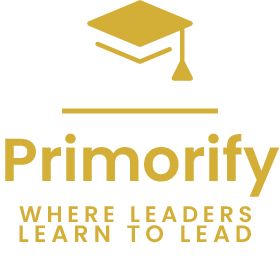The Tech Leader Blueprint™ Blog


What Are The Key Strategies For Tech Leaders To Manage Stakeholder Expectations?
What Are The Key Strategies For Tech Leaders To Manage Stakeholder Expectations?
Strategies for effectively managing stakeholder expectations are vital for your success as a tech leader. By communicating transparently and establishing clear objectives, you can create an environment where stakeholders feel informed and valued. Moreover, actively listening to their concerns can help you alleviate potential conflicts before they arise. It's vital to align your team's goals with stakeholder desires, ensuring their needs are met while maintaining project integrity. Emphasizing regular updates and feedback loops will further enhance trust, allowing you to navigate the inevitably shifting landscapes of technology and business.
Key Takeaways:
Establish clear communication channels to provide regular updates and address concerns, ensuring stakeholders feel informed and included in the decision-making process.
Set realistic goals and timelines to align stakeholder expectations with project capabilities, avoiding overpromising and fostering trust.
Engage stakeholders early in the planning stages to gather insights and feedback, which enhances their investment in the project's success and leads to stronger collaboration.
Types of Stakeholders
A key part of managing expectations involves understanding the different types of stakeholders. These groups can significantly influence your projects and their outcomes. Here’s a breakdown:

Perceiving the multiple facets of stakeholders can help you tailor your communication strategies effectively.
Internal Stakeholders
On the one hand, internal stakeholders include your team members, management, and other departments. Engaging these individuals early can align everyone's vision and objectives. Constant communication ensures that your project complements the organization's goals and facilitates smoother operations.
External Stakeholders
With external stakeholders, you’re engaging with those outside your organization, affecting or affected by your work, including customers, vendors, and regulators. It's important to keep these groups informed and involved in your processes to maintain transparency and trust.
The dynamic between you and external stakeholders can significantly affect your project's success. You must actively engage with your customers to gather feedback, understand regulatory requirements, and address any concerns promptly. A strong relationship with external stakeholders can lead to valuable insights and a positive reputation. However, failing to align expectations can lead to challenges, such as misunderstandings about your product or service, impacting both your project and organizational goals.
Tips for Effective Communication
One of the most effective strategies to manage stakeholder expectations is to prioritize communication. Consider these key approaches:
Utilize clear and concise language.
Establish regular updates.
Encourage feedback.
Be approachable and open.
Perceiving the concerns and interests of your stakeholders will enhance your ability to meet their expectations.
Listening Strategies
With effective listening strategies, you can better understand the needs of your stakeholders. Ensure you are actively engaging during conversations and providing personalized responses that reflect their concerns. This way, you create a more trusting relationship that fosters transparency and collaboration.
Clarity and Transparency
Effective communication involves maintaining clarity and transparency in all interactions. You must provide straightforward information without jargon, ensuring stakeholders grasp your messages fully. Confidently share project statuses, potential challenges, and solutions. This openness fosters trust and can enhance stakeholder engagement. Your ability to communicate with integrity can also mitigate misunderstandings. Transparency builds credibility, making it easier for stakeholders to support your vision. Ultimately, establishing this rapport leads to a more productive working relationship.
You should develop a clear strategy to increase your influence. We develop these strategies in the Tech Leader Blueprint™.
Step-by-Step Approach to Managing Expectations
All tech leaders can benefit from a structured approach to managing stakeholder expectations. This often involves a series of carefully defined steps that allow you to align your project objectives with the needs and desires of stakeholders effectively. Below is a breakdown of these steps:

Identifying Key Expectations
An important first step in managing expectations is to actively engage with your stakeholders. Conducting interviews or surveys can help you understand their priorities, worries, and desired outcomes. This helps in establishing a solid foundation for reaching mutual understanding and consensus.
Setting Realistic Goals
Some project leaders may overpromise to impress stakeholders, leading to unmet expectations. It's vital to set achievable goals that align with your team's capabilities and available resources, thus maintaining trust and credibility.
Understanding your team’s strengths and weaknesses is vital in setting realistic goals. By thoroughly assessing your resources, timelines, and potential risks, you can create objectives that are not only realistic but also help ensure you deliver consistent results. When objectives are attainable, stakeholders can feel confident in your plan, fostering a positive relationship. Setting unrealistic targets may lead to disappointment and decreased morale. In contrast, clear and achievable goals pave the way for success and strengthen your reputation among stakeholders.
Factors Influencing Stakeholder Expectations
After identifying the key areas that shape your stakeholders’ expectations, you will find various factors that play a significant role, including:
Company Culture
Communication Style
Project Scope
Economic Conditions
Regulatory Environment
Assume that understanding these elements will help you better align your strategies with stakeholder perspectives.
Market Trends
On the landscape of technology, staying updated with current market trends is imperative, as it shapes expectations regarding your project’s performance and deliverables. Stakeholders often look for signs of innovation, market competitiveness, and consumer preferences, thus making it important for you to integrate these trends into your planning.
Technological Advancements
Any technological advancements can significantly alter the expectations of your stakeholders, as they may demand faster, smarter, and more versatile solutions. These advancements can lead to an evolving framework that impacts project timelines, costs, and outcomes.
With the rapid pace of technological evolution, your stakeholders might anticipate enhanced features and capabilities that cater to changing demands. Be mindful that cutting-edge innovations can lead to a shift in project scope, which may heighten expectations around performance and reliability. Moreover, while you can leverage new technologies to improve efficiency, you must be careful of potential pitfalls, such as security risks and integration challenges. Balancing these factors effectively will position you as a proactive leader in managing stakeholder expectations.
Pros and Cons of Different Management Strategies
Keep in mind that each management strategy has its unique strengths and weaknesses. Understanding these can help you choose the best approach to manage stakeholder expectations effectively.

Collaborative Approaches
An effective way to engage stakeholders is through collaborative approaches, where you involve them in decision-making processes. This not only boosts their commitment but also taps into diverse perspectives, ultimately leading to more innovative solutions. However, make sure to manage the time invested in discussions to avoid delays.
Directive Approaches
Some tech leaders prefer directive approaches when clarity and swift decision-making are paramount. By establishing clear guidelines, you ensure that everyone is aligned with your vision. This straightforward method can effectively drive projects but might create pushback from stakeholders who prefer more involvement.
Plus, while directive approaches can provide immediate clarity and streamline decision-making, they come with potential downsides. If you become too authoritarian, there is a risk of creating disengagement among your stakeholders. They might feel alienated from the process, reducing their investment in the project's success. Balancing authority with open communication is crucial to mitigate these risks and foster an engaging environment.
Learn more with One-on-One Coaching see our services at: Primorify Services Offered and step up your game
Measuring Success in Managing Expectations
Your ability to effectively manage stakeholder expectations is often reflected in measurable outcomes. By using various metrics, you can assess how well you’ve communicated and aligned expectations with stakeholders. Evaluating these key performance indicators can help you to identify areas for improvement and ensure that you are meeting, if not exceeding, the expectations of those you serve.
Feedback Mechanisms
Assuming you have established open channels of communication, feedback mechanisms serve as vital tools for understanding stakeholder perceptions. By soliciting input through surveys or regular check-ins, you can gauge their satisfaction and gather insights on areas where you might need to adjust strategies. Actively engaging with stakeholders in this manner fosters trust and enhances your relationship with them.
Performance Indicators
On the other hand, utilizing performance indicators allows you to objectively assess how well you are managing expectations. These metrics can range from project delivery timelines to stakeholder satisfaction ratings. By consistently tracking these indicators, you can identify trends, celebrate wins, and proactively address any issues that may arise.
Success in measuring performance indicators lies in monitoring key metrics that directly correlate with stakeholder expectations. For instance, project timelines can indicate if you are delivering on your promises, while stakeholder satisfaction scores reveal their level of contentment. By analyzing this data, you create a foundation for ongoing improvements and enhance the overall effectiveness of your leadership. Keeping a close watch on these performance indicators not only boosts transparency but also helps you make informed decisions that can lead to long-lasting relationships with stakeholders.
Summing up
Ultimately, managing stakeholder expectations as a tech leader involves clear communication, setting realistic goals, and maintaining transparency throughout the project lifecycle. You should prioritize active listening to understand stakeholder needs and concerns, while also educating them on technical complexities. Regular updates and feedback loops are crucial to align expectations and build trust. By fostering collaboration and demonstrating adaptability, you can effectively navigate challenges and ensure that your stakeholders remain engaged and supportive of your initiatives.
Reach out to us at https://primorify.com to increase your leadership reach and stakeholder management strategies.
Q: What techniques can tech leaders use to effectively communicate project goals to stakeholders?
A: Tech leaders can utilize several techniques to ensure clear communication of project goals to stakeholders. First, they should create a shared vision document that outlines the project objectives, benefits, and timelines, which can be referenced throughout the project. Regular updates through meetings, newsletters, or dashboards can help keep stakeholders informed of progress and any changes. Additionally, using visual aids such as charts, graphs, or presentations can clarify complex concepts and ensure everyone is aligned on expectations. Finally, fostering an open dialogue by encouraging questions and feedback can build trust and involve stakeholders in the decision-making process.
Q: How can tech leaders manage stakeholder conflicts, especially when there are differing priorities?
A: Managing conflicts among stakeholders with varying priorities requires diplomatic negotiation and open communication. Tech leaders should actively listen to each stakeholder's concerns and perspectives to understand the root of the conflict. Organizing a meeting where stakeholders can discuss their priorities openly can help identify common ground and facilitate compromise. Leaders can also involve neutral facilitators if necessary, who can mediate discussions and guide stakeholders towards mutually beneficial solutions. Establishing clear criteria for prioritization based on project goals and overall organizational objectives can also help align stakeholders' interests.
Q: What role does transparency play in managing stakeholder expectations?
A: Transparency plays a significant role in managing stakeholder expectations as it fosters trust and confidence in tech leaders. When stakeholders are kept informed about project developments, challenges, and changes, they are more likely to stay engaged and supportive. Tech leaders should share both successes and issues, providing context for any setbacks or delays. Regularly soliciting feedback can also demonstrate transparency, making stakeholders feel valued and involved. Furthermore, creating a culture of openness encourages stakeholders to voice concerns early, allowing tech leaders to address them proactively before they escalate.
© 2025 Primorify - All rights reserved
Disclaimer
This site and our services are not affiliated with or endorsed by Facebook, Instagram, TikTok, LinkedIn, YouTube, or Twitter. Additionally, we are not sponsored by, endorsed by, or otherwise connected with these platforms. All associated trademarks belong to their respective owners.
Earnings Disclaimer
We do not promote "get rich quick" schemes. We believe in hard work, adding genuine value, building a professional career, and serving others with excellence and consistency. Success in our programs requires effort, discipline, and dedication, similar to any other professional development or continuing education program.
While we may get to know you personally through our coaching program and provide tailored guidance based on your unique circumstances, we cannot and do not guarantee specific results or earnings. Your success ultimately depends on your skills, effort, and commitment to implementing the strategies we provide.
Our goal is to provide high-quality educational content, practical strategies, and personalized support to help you achieve your goals. Please note that all products, services, and content offered by our company are for informational and educational purposes only. Nothing on this site, in our materials, or within our curriculum constitutes a promise of results, income, or future success.
Furthermore, we do not offer legal, medical, tax, or other professional advice. Always consult with a licensed professional for specific guidance in these areas.

